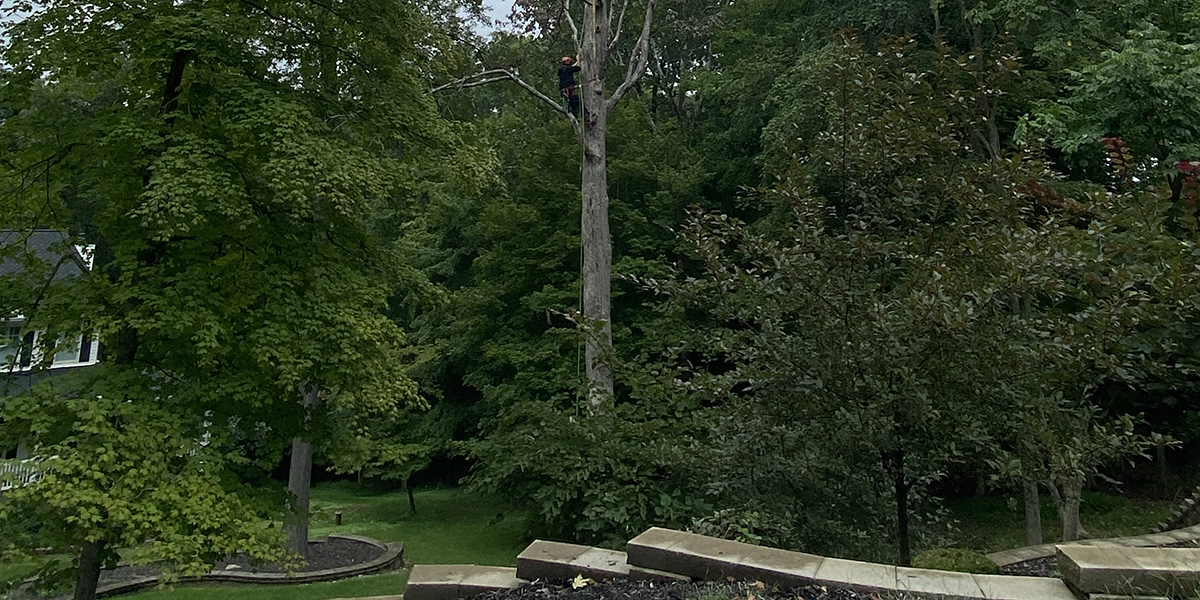
Are you a gardening enthusiast who wants to give your beloved trees the best start? Trimming them at an early age brings a wealth of advantages and helps them grow in a healthy, robust way.
As the go-to tree trimming and pruning service in Texarkana, AR, we at Hawkins Tree and Landscaping know everything when it comes to pruning young trees. Keep reading as we break down all the details to help you get the most out of this practice!
Starting Out with a Newly Planted Tree
Very young saplings need time to create a strong root system before they can withstand regular pruning. If your specimen is less than a year old, you should limit your cuts to damaged or dead twigs and branches, if any.
Your Goals
Once your tree establishes itself, you can start trimming it the right way. Always have a purpose in mind before starting a pruning session, as every cut will greatly influence the tree’s future development. Start out with these three objectives:
Establish a Strong Scaffold Structure
When training your tree, you should first identify the primary or scaffold limbs that will eventually make up its main framework. They should have:
- Wide angles of attachment with the trunk
- Even spacing and distributed radially around the trunk
- 24 to 36 inches of space between major limbs
- No limbs growing directly over a lower one
You should determine the height of the lowest scaffold limb by your anticipated activities under the tree, such as walking, mowing, or having seating arrangements.
Some varieties, like ash and maple, require special attention, as they have major branches forming in pairs across their trunk. Alternately pruning these at a height of 12 to 18 feet creates an attractive and structurally sound specimen.
Develop the Trunk
Unless your specimen has a natural multi-stemmed growing pattern, you should try to train it to a single central dominant leader. This is the topmost vertical stem that lies parallel to the main trunk. Never prune the tip of the dominant leader or allow secondary branches to outgrow it.
Address Weak or Competing Branches
As the training continues, watch how your tree’s lateral branches grow. Always remove:
- Laterals growing higher than the leader or stretching beyond the perimeter of the crown or main branching structure
- Branches growing inward toward the center of the crown
- Structurally weak and unsightly basal sprouts and water sprouts
Trimming Trees the Right Way
Are you ready to start pruning young trees? Follow the proper pruning practices to minimize plant stress and achieve the best results:
Using the Best Tools
Loppers and long-handled pruners work best for small branches, while larger limbs may require long-bladed saws. Always clean them after every use to prevent disease spread.
Making the Cut
In general, you should trim just outside the branch collar to hasten healing and minimize bark tears. Every pruning cut should have 1/3 the size of the branch you want removed. You should also never cut the branch fully flush with the trunk, which encourages hole formations.
Avoiding Wound Dressings
After removing branches, greenhorn gardeners have the tendency to over-treat the wound with paints and sealants. These harmful products keep wounds from closing naturally, retain moisture, and attract pests.
Leave it to the Professionals
Pruning young trees involves a great deal of skill to execute correctly, and not everyone has the time or energy to do it. Why not let our team at Hawkins Tree and Landscaping lend you a helping hand?
Call (870) 330-9912 today to book a session and give your landscape the royal treatment it deserves. Explore our blog and learn how trimming trees prevent root growth, mulching tips, and so much more.

